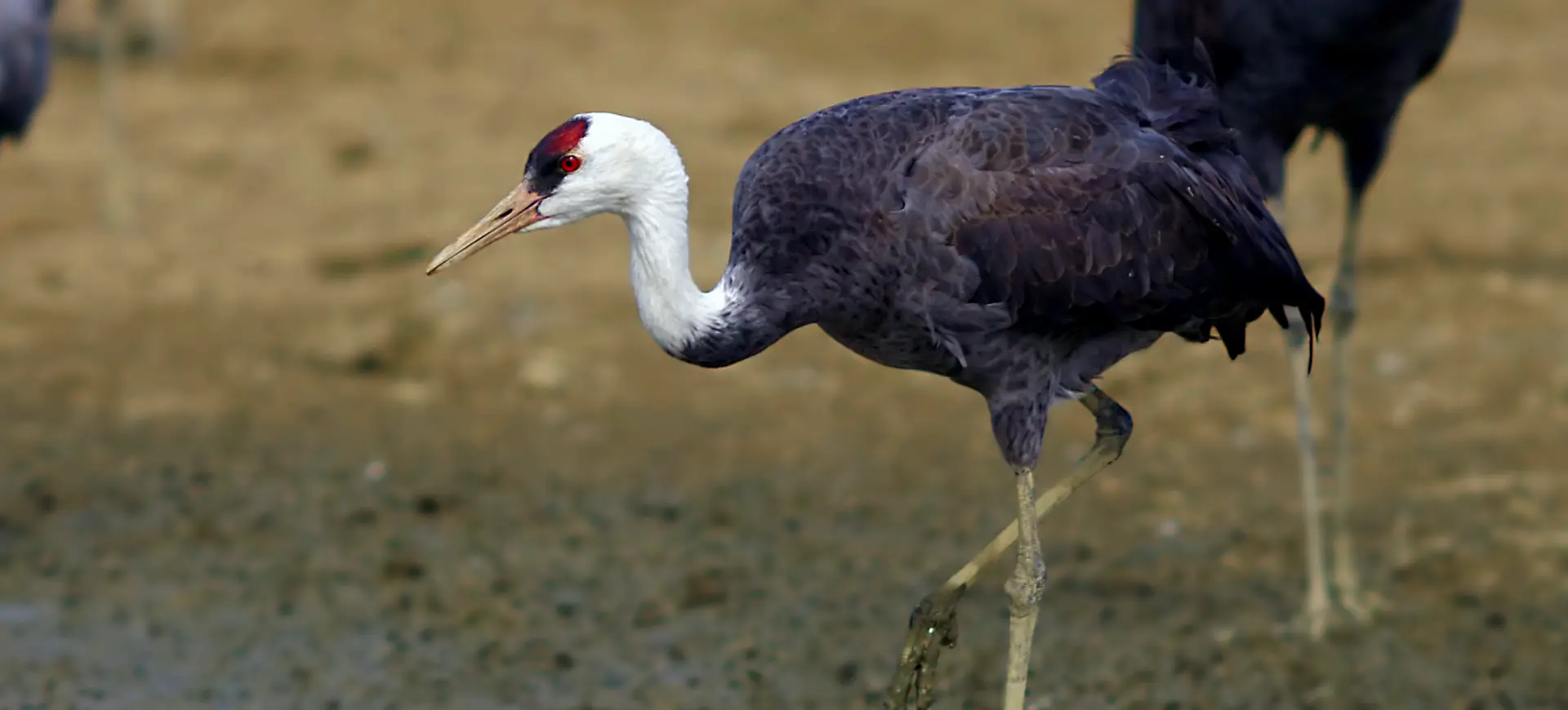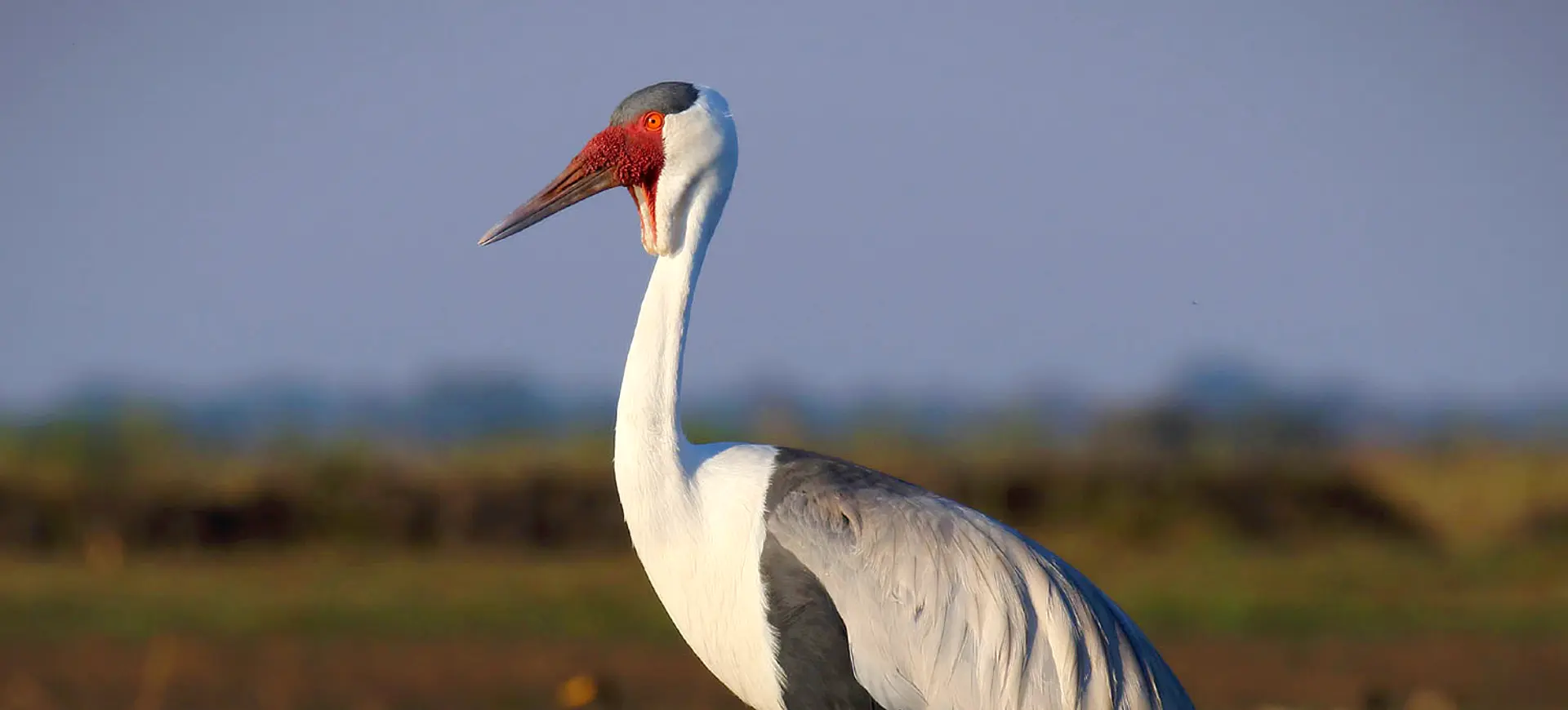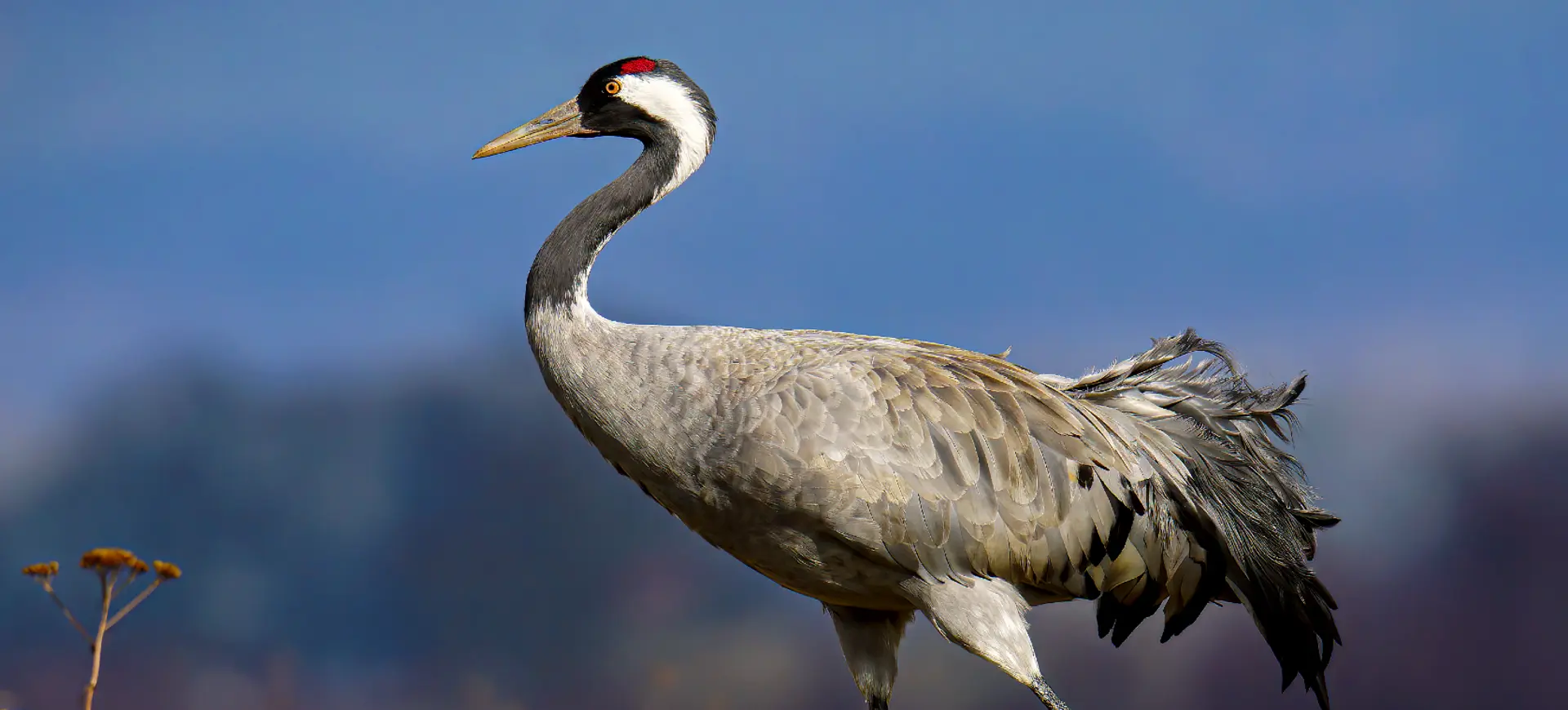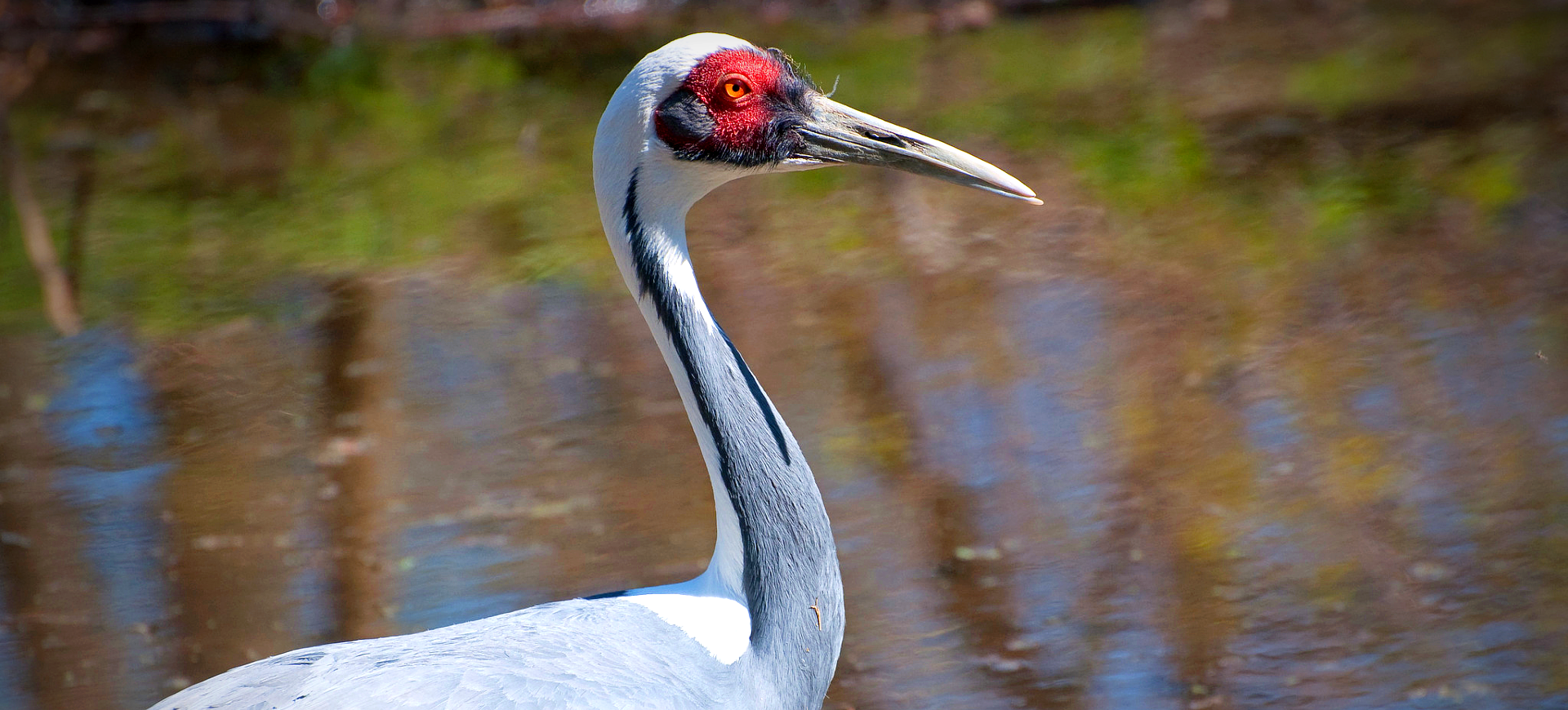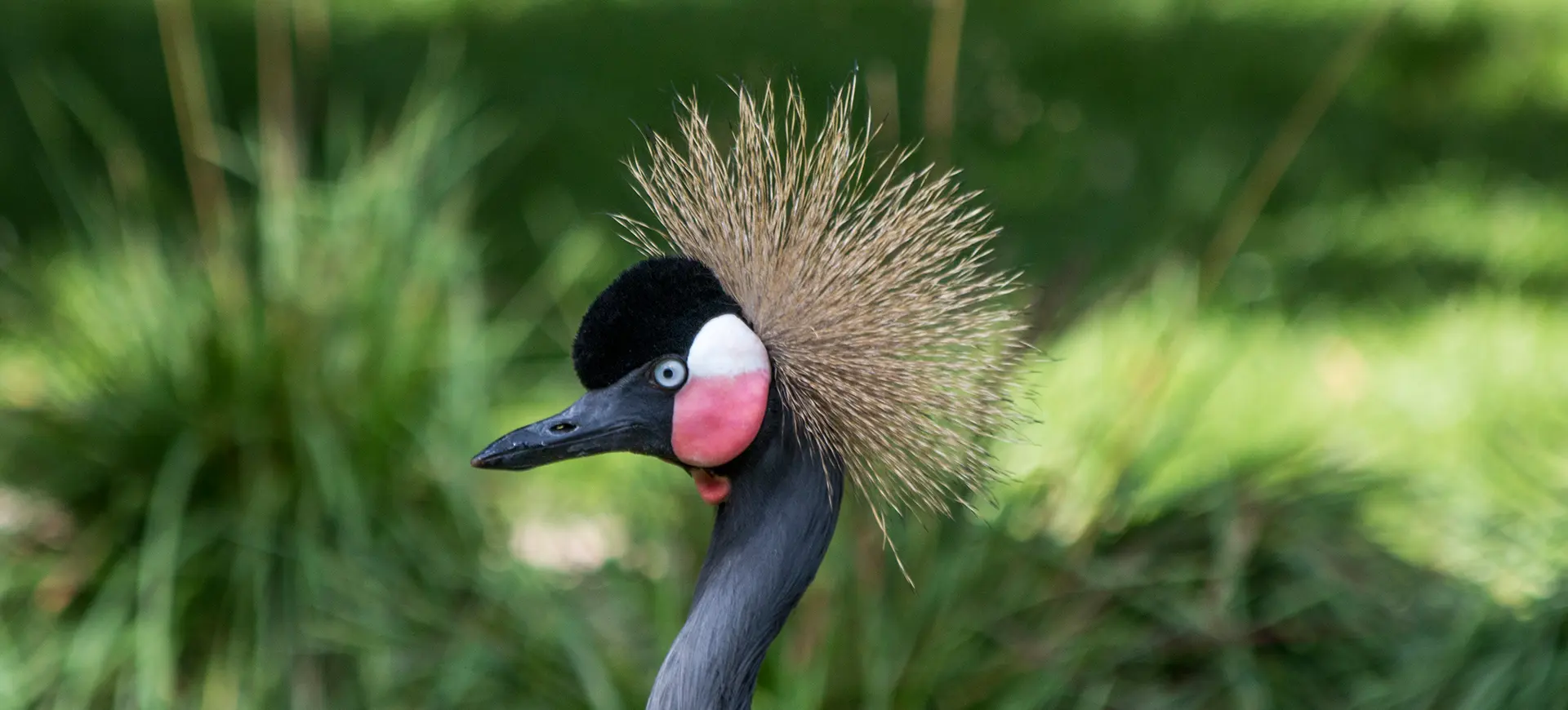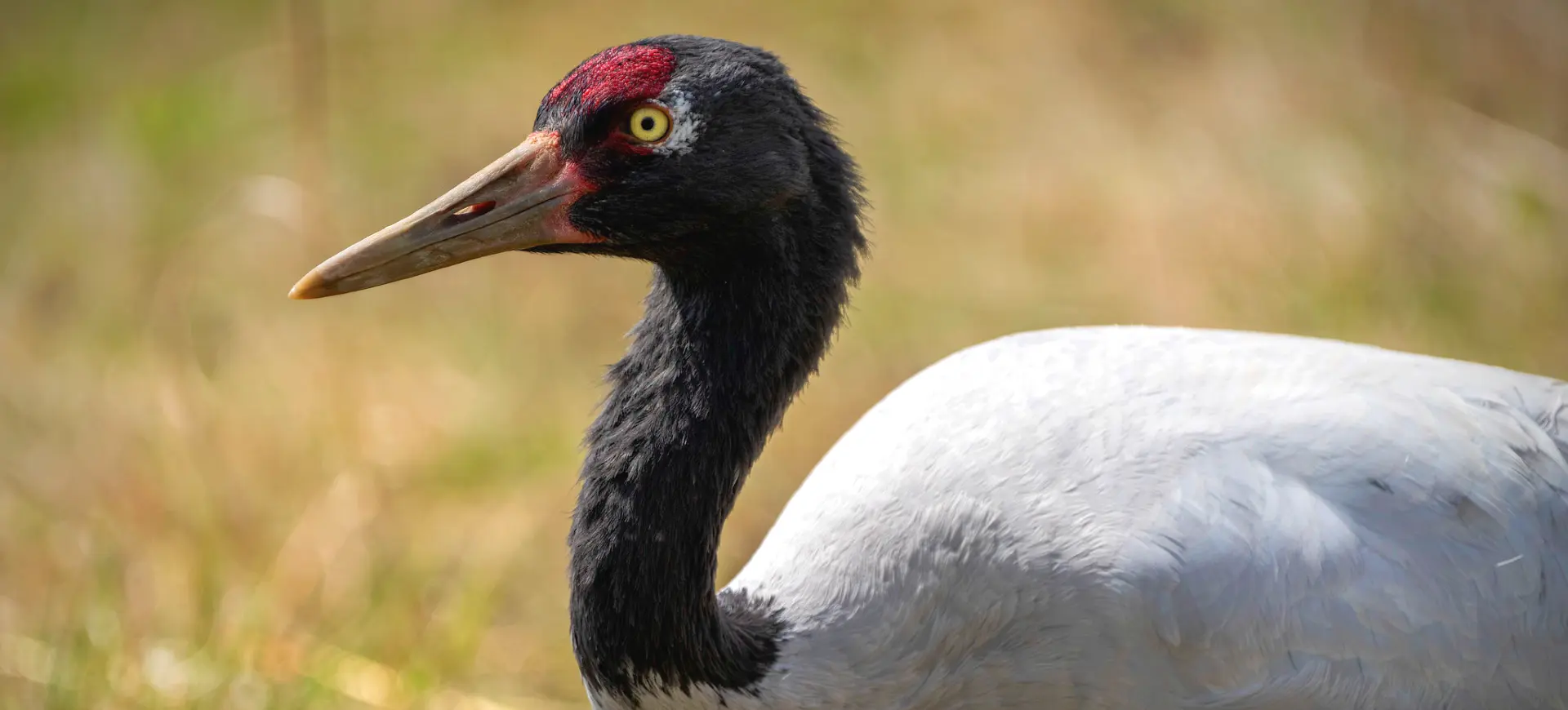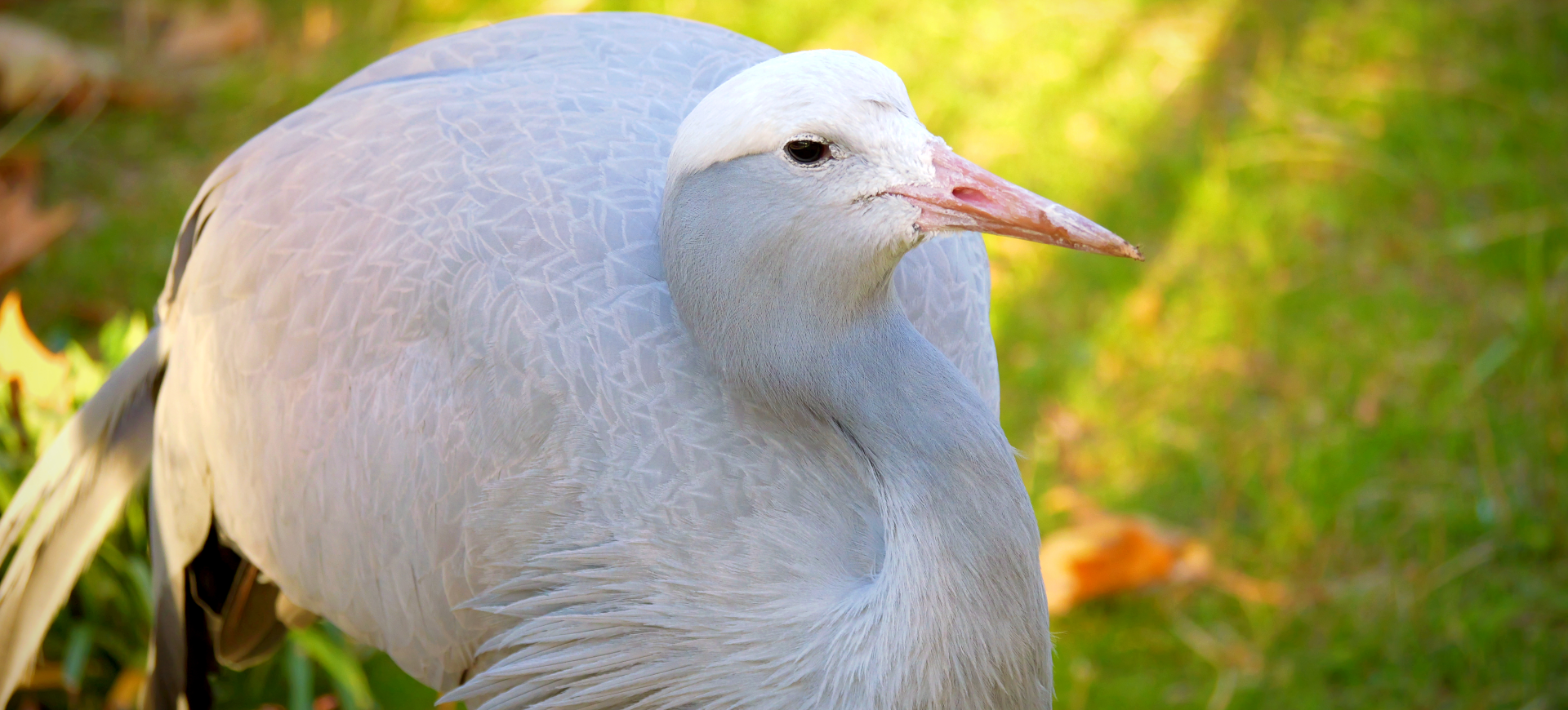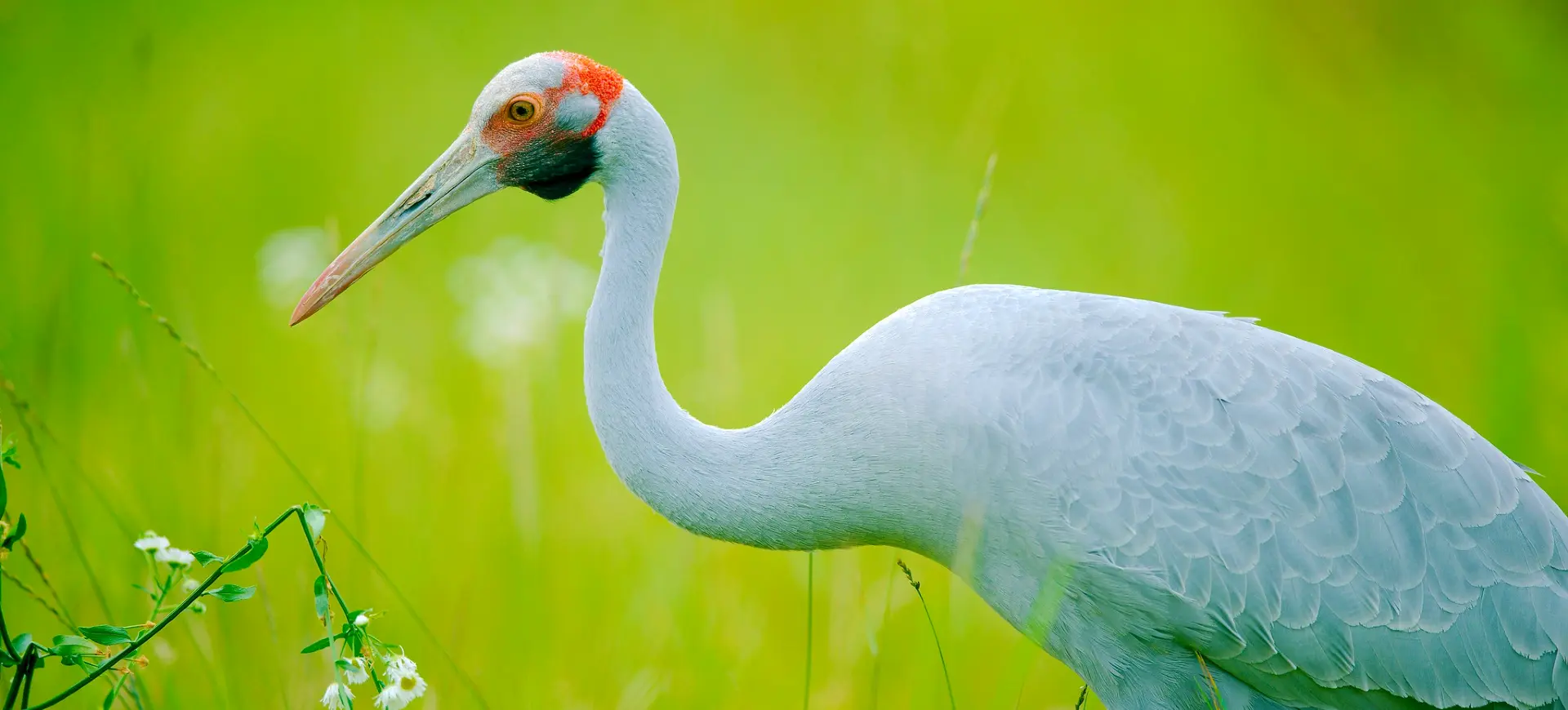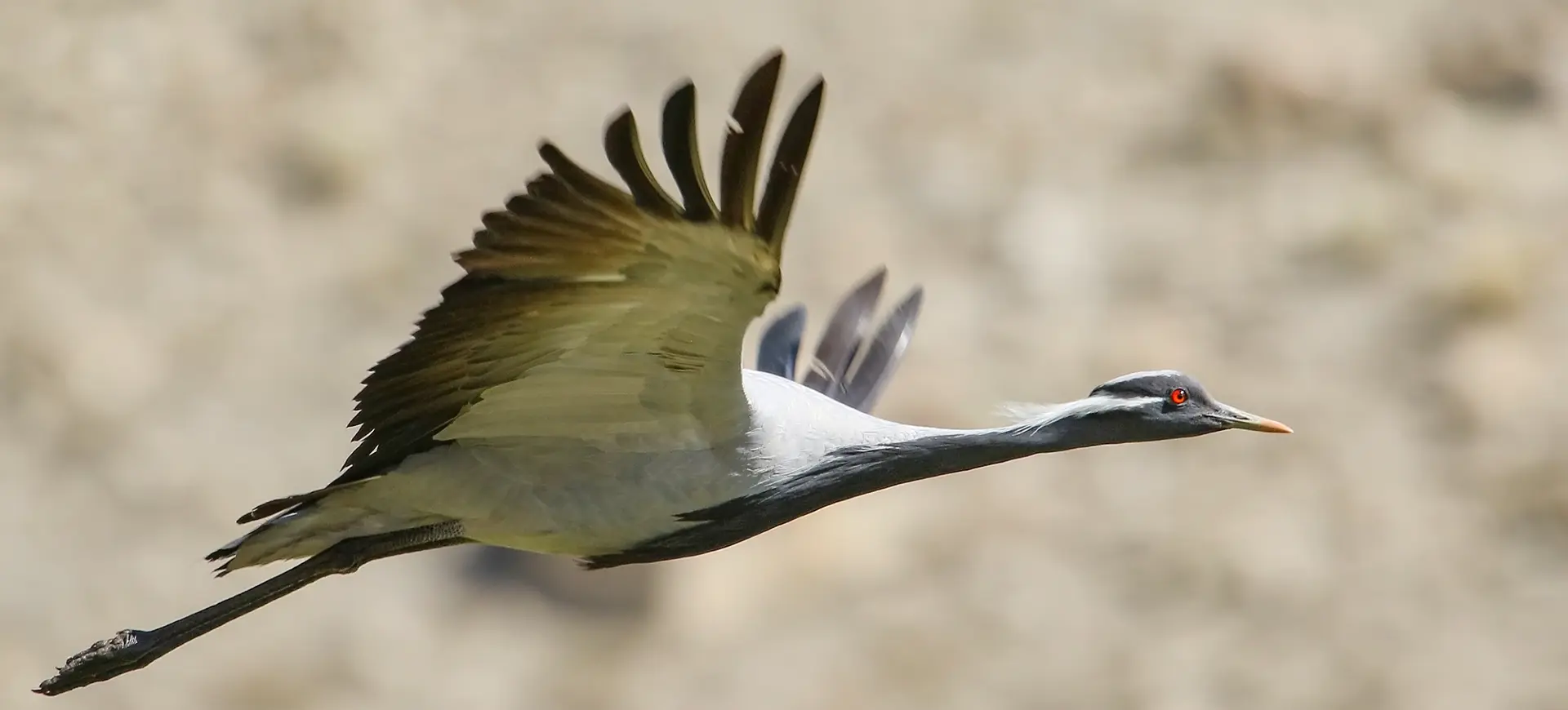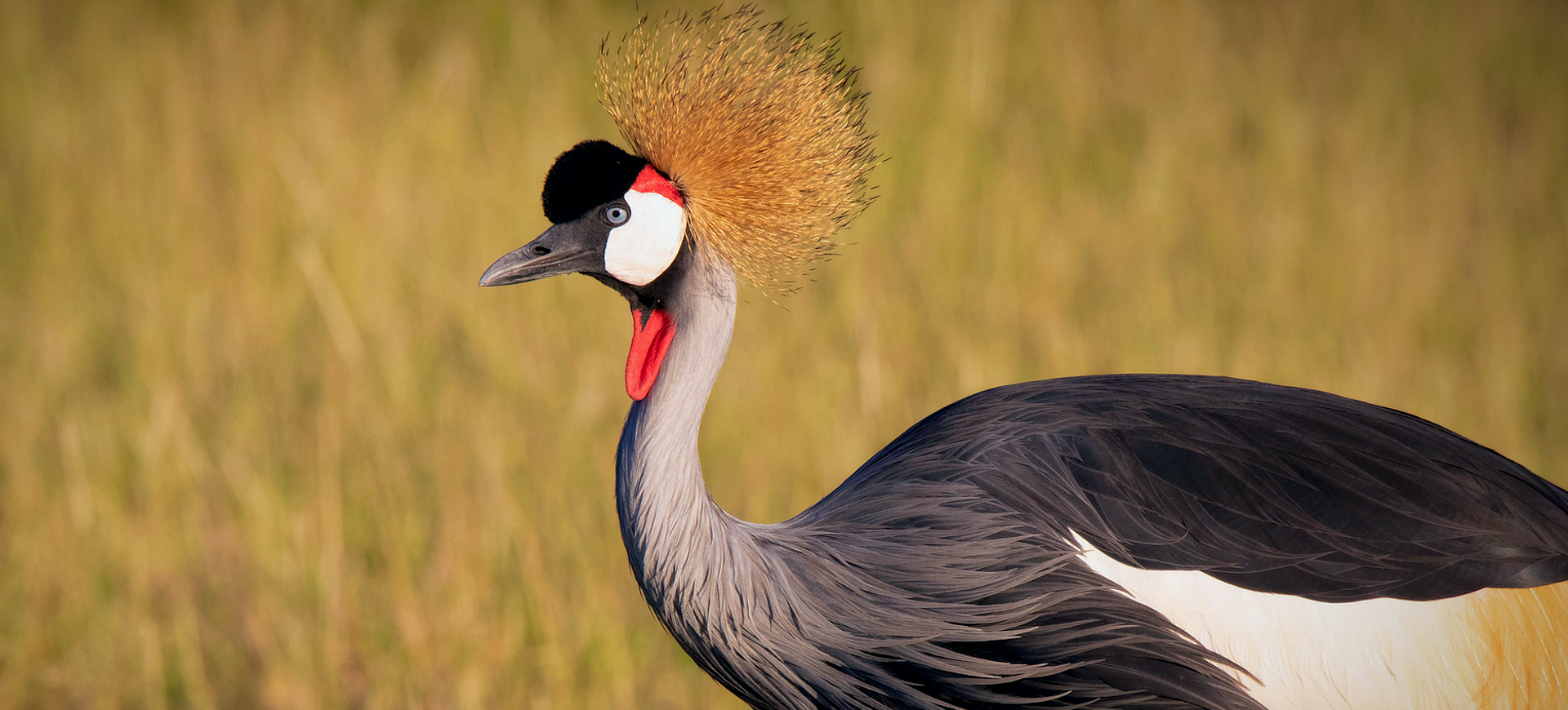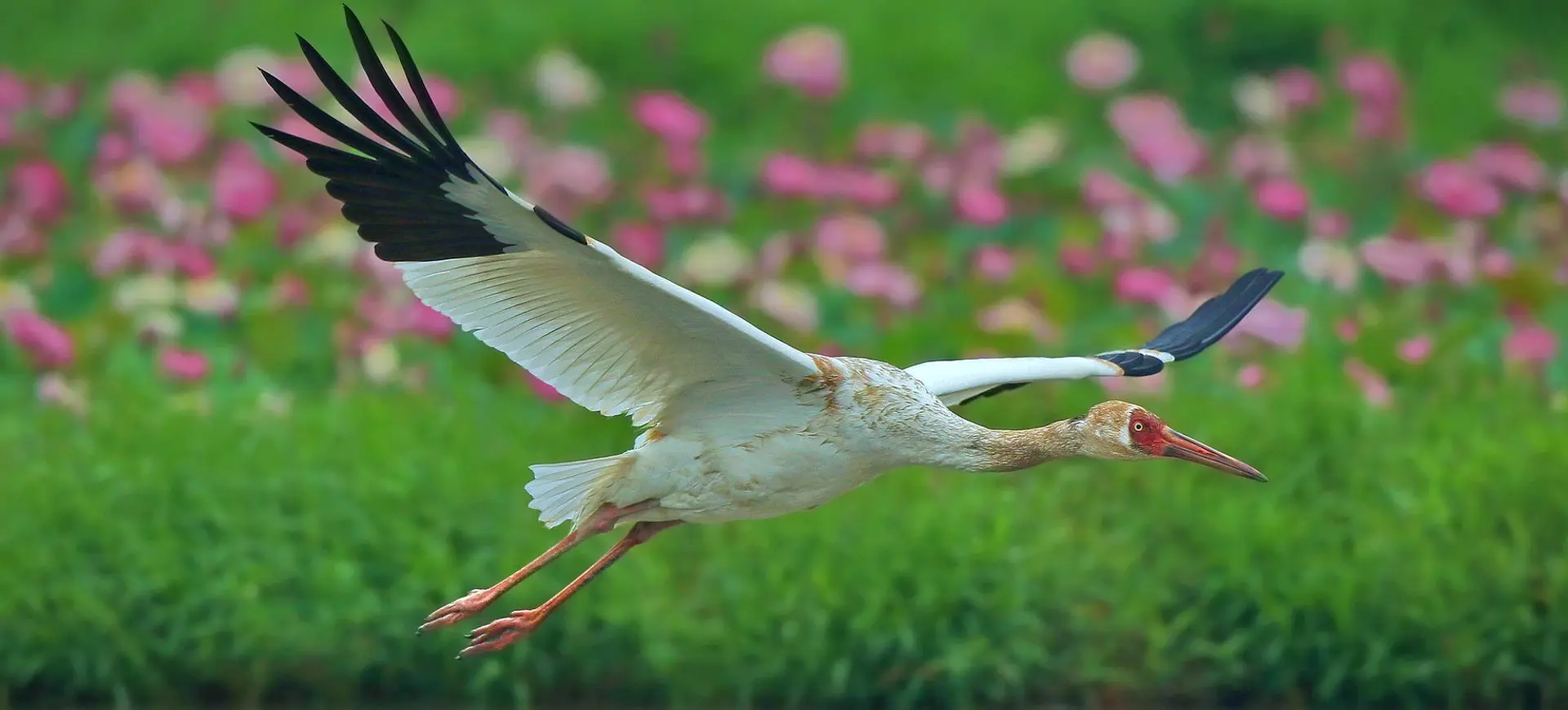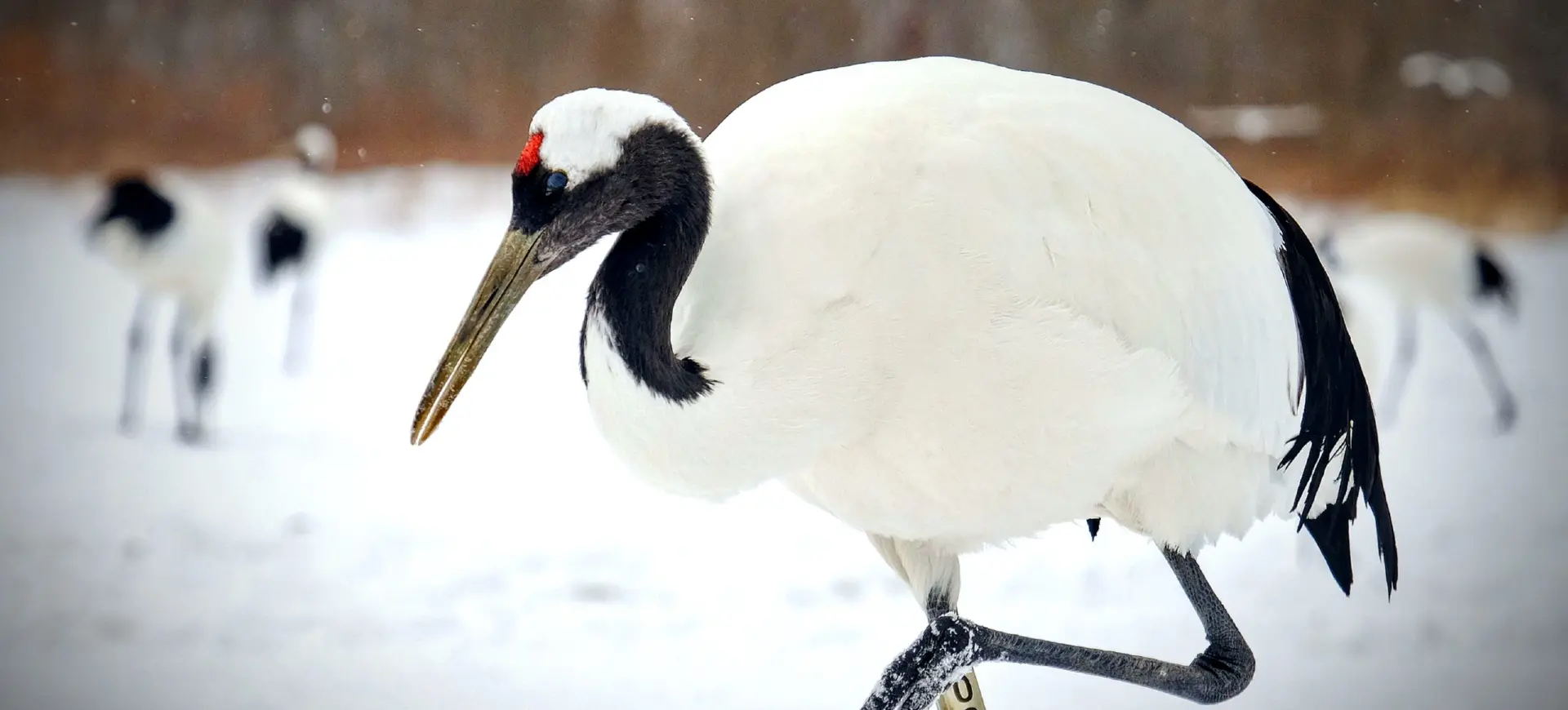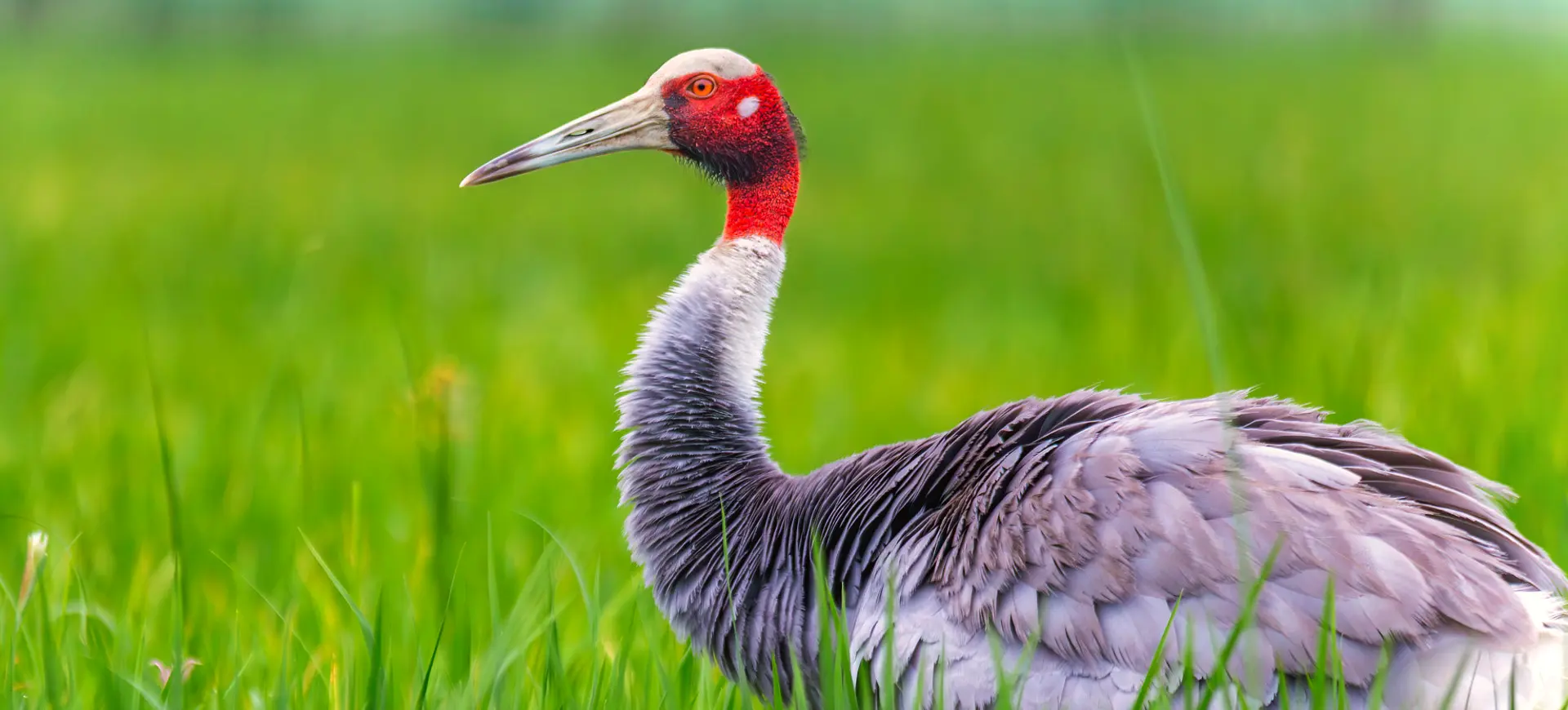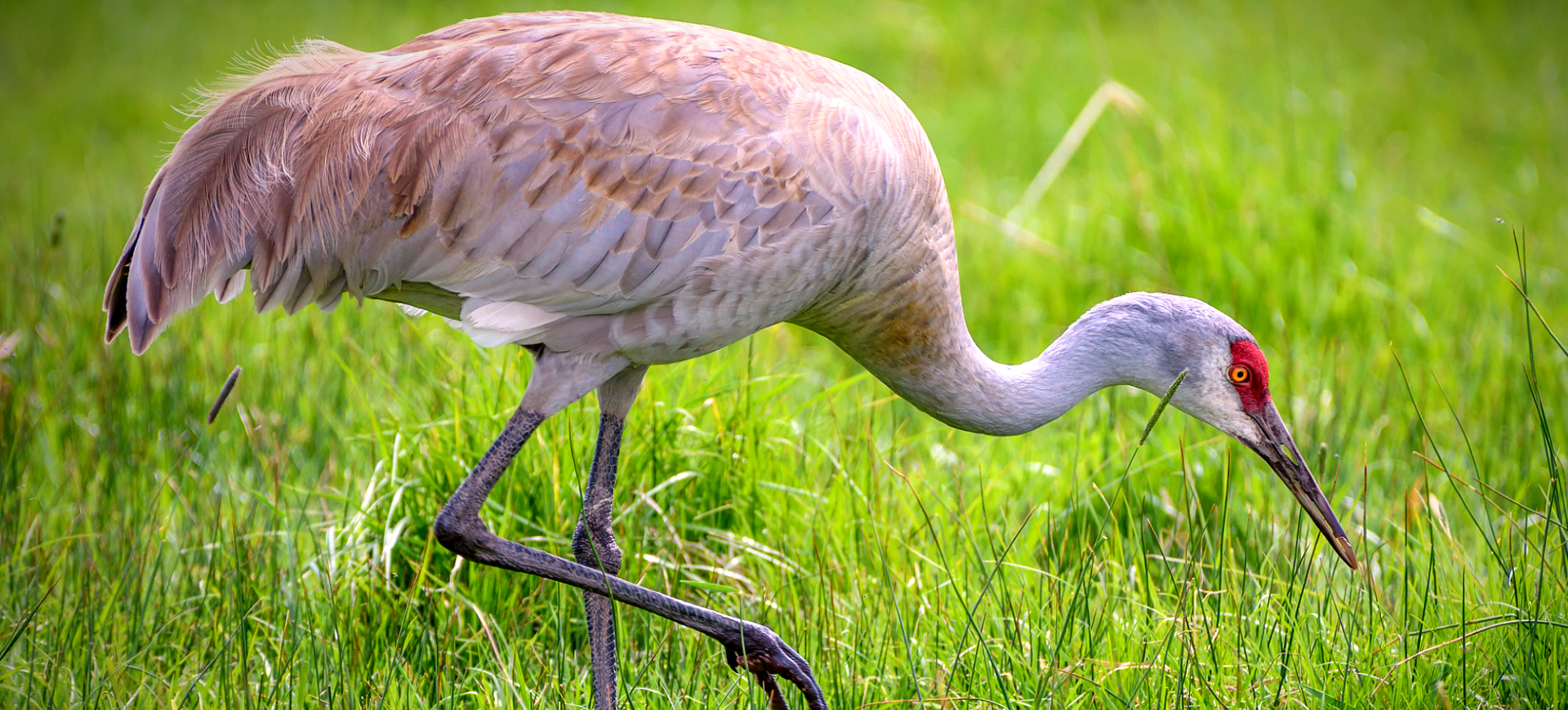Overview
The Whooping Crane holds a special place as one of North America’s most iconic birds, largely because of its compelling appearance and unique behaviors. Its status as an endangered species makes it a focal point for conservation efforts, further elevating its significance in the public eye. Known for its striking white plumage, the bird is a visual highlight in the wetlands and prairies it inhabits. The white feathers make it easily recognizable and add an aesthetic quality to the ecosystems it occupies.
Another defining characteristic of the Whooping Crane is its distinctive vocalizations. The bird gets its name from the loud, resonant “whooping” calls it makes, which can carry for several miles. These calls serve multiple purposes, including communication between mates, signaling danger, and maintaining group cohesion during migratory flights. The calls are particularly notable because of their pitch and volume, capable of cutting through ambient noise in the crane’s natural habitats.
The bird’s physical structure further adds to its allure. It has a slender body supported by long, sturdy legs and an elongated neck, making it appear elegant and statuesque. These features contribute to its graceful appearance and serve functional roles, aiding in its foraging and migratory behaviors. This combination of unique traits and behaviors has made the Whooping Crane a subject of ongoing fascination and study for ornithologists while capturing the imagination of bird enthusiasts and the general public.
Taxonomy
Kingdom
Phylum
Class
Order
Family
Genus
Species
Type
Physical Description:
The adult Whooping Crane is predominantly white and easily identifiable in its natural habitat. The tips of its primary feathers are black, providing a stark contrast that becomes especially noticeable when the bird is in flight. Its eyes are a distinctive yellow, and its beak is long and pointed, darkening towards the tip while lightening near the base.
Regarding sexual dimorphism, there is little difference in the plumage between males and females, making them somewhat challenging to distinguish solely based on appearance. However, males are generally larger than females, offering a subtle but important clue for identification. This size difference is one of the few morphological distinctions between the sexes within the species.

Lifespan: Wild: ~22 Years || Captivity: ~35 Years

Weight: Male: 15-17 lbs (6.8-7.7 kg) || Female: 13-15 lbs (5.9-6.8 kg)

Length: Male: 54 inches (137 cm) || Female: 50 inches (127 cm)

Height: Male: 52-58 inches (132-147 cm) || Female: 47-52 inches (119-132 cm)

Wingspan: 90 inches (228 cm)

Top Speed: 30 mph (48 km/h)
Characteristic:
Native Habitat:
Whooping Cranes are indigenous to North America and are naturally inclined to inhabit wetlands, marshes, and prairies. These ecosystems offer abundant food sources and serve as optimal breeding grounds for the species. The various water bodies within these habitats provide them with feeding opportunities and refuge from predators, making these environments crucial for survival.
Historically, Whooping Cranes were widespread across North America, but their populations have dramatically declined due to several human-induced factors. Habitat loss due to agricultural expansion and urban development has severely limited their living spaces. Additionally, hunting pressures in the past have contributed significantly to reducing their natural range, making them one of the continent’s most endangered bird species.
Biomes:
Biogeographical Realms:
Continents:
Countries:
Diet:
Diet & Feeding Habits:
Whooping Cranes are omnivorous birds with a diverse diet encompassing aquatic invertebrates, small fish, frogs, and various plant materials. They often feed in shallow waters, using their elongated, pointed bills to probe the mud and capture prey. The design of their beak is highly functional, allowing them to easily seize and consume a wide variety of food items.
Their diet is also highly adaptable, shifting according to seasonal availability and geographical location. During some parts of the year, they may focus more on aquatic invertebrates, while at other times, plant matter may make up a larger proportion of their diet. This adaptability in feeding habits is crucial for their survival, especially given the seasonal variations in food sources within their habitats.
Mating Behavior:
Mating Description:
The Whooping Crane is a monogamous species, typically forming mating pairs lasting for several years or even for life. The bond between the male and female is reinforced through elaborate courtship rituals, which include intricate dances. During these dances, both partners stretch their wings, leap into the air, and emit their signature loud calls, strengthening their pair bond and facilitating mating.
Egg-laying usually occurs between late April and May, with the specific timing influenced by environmental conditions and the availability of resources. Both parents are responsible for incubating the eggs, although the female generally spends more time in the nest. The joint parental care extends beyond incubation and includes feeding and protecting the chicks once they hatch, underscoring the collaborative nature of Whooping Crane parenting.
Reproduction Season:
Birth Type:
Pregnancy Duration:
Female Name:
Male Name:
Baby Name:
Social Structure Description:
Whooping Cranes are social birds, particularly evident during migration periods when they travel in groups. The act of migration often involves complex social interactions, including formation flying and collective decision-making on when to rest and feed. The social structure facilitates information sharing among the birds, enhancing their chances of successfully reaching their destination.
However, this social behavior changes during the breeding season, when Whooping Cranes become more territorial. Family units generally consist of the two adult parents and their offspring, which claim specific areas to nest and rear their young. These family units maintain their coherence until the young cranes reach maturity; at this point, they may set out to form their own families or join other social groups.
Groups:
Conservation Status:
Population Trend:
The Whooping Crane population has gradually increased in recent years, largely thanks to ongoing conservation efforts. Various programs aimed at habitat preservation, reintroduction, and public education have contributed to this uptick. However, despite these positive strides, the species’ population remains critically low compared to historical levels, indicating that much work still needs to be done.
The natural range of the Whooping Crane has contracted significantly over the years due to habitat loss and human activities. As a result, the species has become increasingly dependent on designated conservation areas for survival. These protected areas offer the cranes the essential resources they require, such as food and suitable nesting sites, and are instrumental in the species’ fight for survival and recovery.
Population Threats:
Habitat loss is the greatest threat to the Whooping Crane due to agricultural expansion and urban development. These activities have encroached upon the wetlands, marshes, and prairies the species relies on for food and breeding. The contraction of these natural habitats has detrimentally affected the crane population, limiting their numbers and geographic distribution.
Other threats exacerbating the crane’s precarious situation include hunting, collisions with power lines, and water source contamination. While hunting is generally illegal, instances still occur and pose a risk to the already limited population. Active conservation measures have been put in place to mitigate some of these threats, such as installing bird-safe power lines and monitoring water quality. However, numerous challenges remain in ensuring the long-term survival of the species.
Conservation Efforts:
Conservation programs aimed at protecting the Whooping Crane are multifaceted, focusing on key areas such as habitat restoration, captive breeding, and reintroduction into suitable natural environments. These programs aim to expand the living space available to the cranes by rehabilitating degraded wetlands and creating new suitable habitats. Captive breeding initiatives also contribute by rearing cranes in controlled settings before releasing them into the wild, thus bolstering the population.
Alongside these direct interventions, education and public awareness campaigns are integral to the conservation strategy. These efforts aim to educate the public about the importance of the Whooping Crane to its ecosystem and what can be done to protect it. Additionally, legal measures have been enacted to fortify these efforts, most notably the listing of the Whooping Crane under the U.S. Endangered Species Act, which provides a framework for its protection and recovery.
Additional Resources:
Fun Facts
- Whooping Cranes are the tallest birds in North America.
- The Whooping Crane’s call can carry for several miles.
- These birds mate for life, and both parents are involved in raising the chicks.
- They perform complex courtship dances.
- Despite their size, they are agile fliers.
- They have been known to live up to 35 years in captivity.
- Whooping Cranes were near extinction in the 1940s.
- They are named for their loud, trumpeting call.
- They can consume up to 60% of their body weight daily when feeding high-protein foods.
- The birds migrate up to 2,500 miles between their breeding and wintering grounds.










